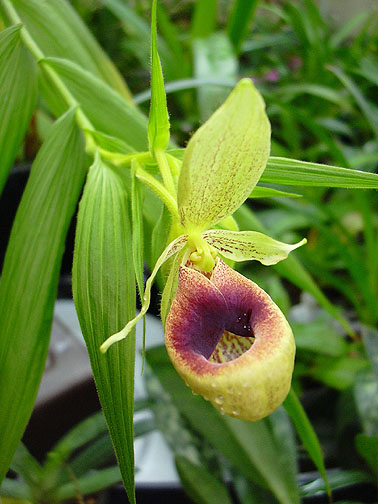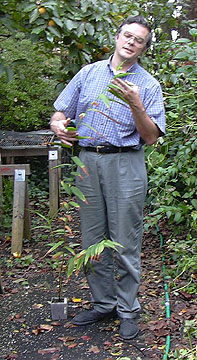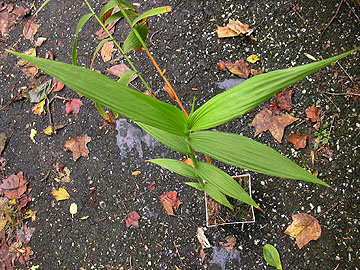

| I have been fascinated by this obscure genus of ladyslippers for nearly 40 years. I am please to report some observations based on a plant acquired as a seedling and grown to bloom in Baltimore, Maryland. I say observations because I cannot claim to be an expert. I always find irritating those writers who offer advice based on speculation. I hope that I am able to clearly differentiate between observations and speculations in these pages. I ardently seek word from others who have grown members of this genus. At this time (November 2003), I am concentrating on propagating this specimen. I will be glad to make specific observation and documentation for the botanically inclined, but no further dissection at this point. I have no propagations available. If I am successul in propagating the species, seedlings will be offered first to responsible parties who can further propagate the species, then to other interested growers. |
| Selenipedium Observations | Selenipedium Culture | Selenipedium Floral Details |
 Selenipedium aequinoctiale Garay |
Selenipedium aequinoctiale Garay Flora Ecuador no. 9: 13, fig. 4B. 1978 I was introduced to this particular species in a talk given by Stig Dalstrom at the Paph Forum in Washington, D.C. in February 2001. He presented a slide from his collection of this plant in blossum -- a single bright flower at the end of a stem which had hosted easily 15 or more flowers over the course of time. Mr. Dalstrom had me contact XXXX of EcuaGenera, a nursery in XXXX, Ecuador. From EcuaGenera, I obtained four seedlings in early 2002. The good people at EcuaGenera reported that they grew this ladyslipper in a mixture of sand and tree fern and that it was a warm-growing species. Following their advice, I planted one in such a mixture using horticultural sand in an AirCone pot with enough Sphagnum in the bottom to prevent the sand from flowing out of the pot. Another plant was potted in a mix of sand, tree fern, and Sphagnum. A third was planted in a mix of sand and sterilized soil and perlite used successfully for the Cypripediums featured elsewhere on this site. The fourth plant was badly delayed in transit and arrived in rather poor condition. It was potted in the sand-tree fern mix. All plants were watered with rain water only as has been successful for the Cypripediums. Within a month, the delayed plant had perished. Within a few months, the plant grown in the soil mix sickened and died. The two in the horticultural sand and tree fern mixed grew, with the one in sand and tree fern only growing vigorously. This is too small a sample to claim any absolute answers, but the mix of sand and tree fern, watered with rainwater was satisfactory for at least one plant. My Selenipedium aequinoctiale is grown indoors under fluorescent lights in a basement with winter tempertures around 60°F and summer temperatures around 85°F. |
 |
 |
Permission is granted to reproduce these pages for educational use in newsletters and programs. |